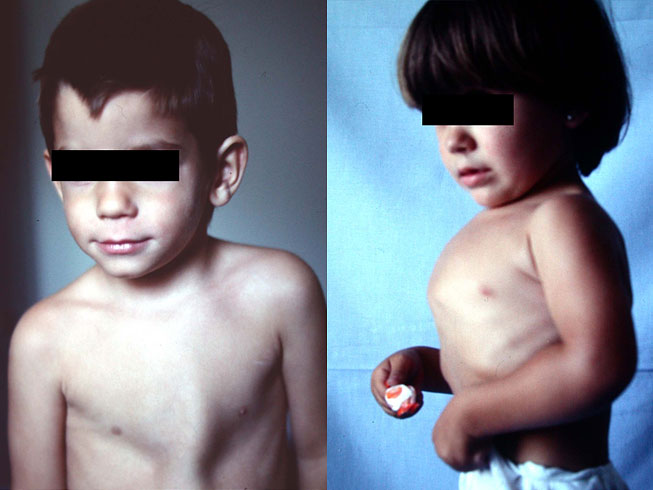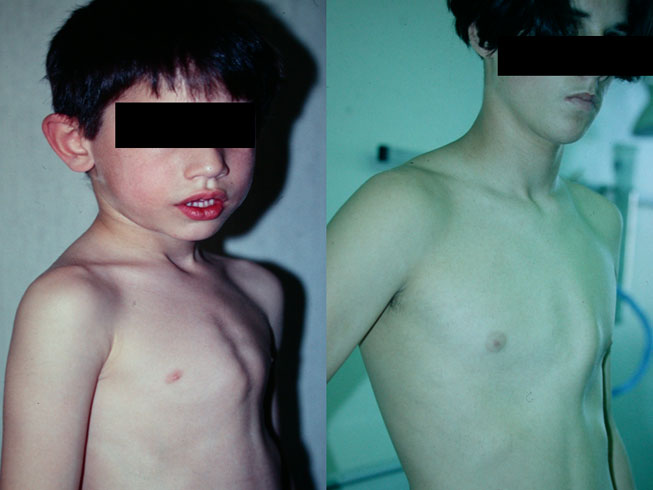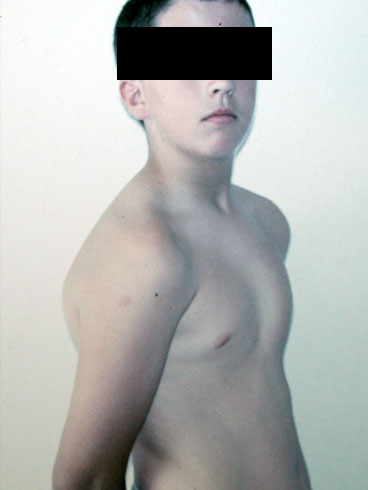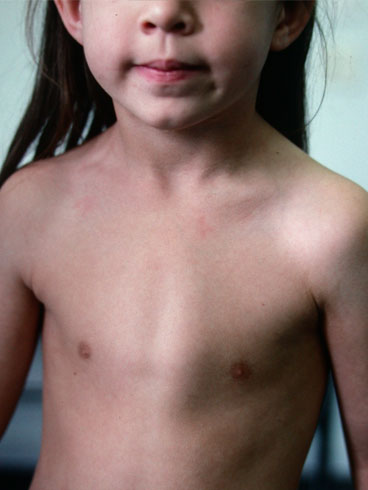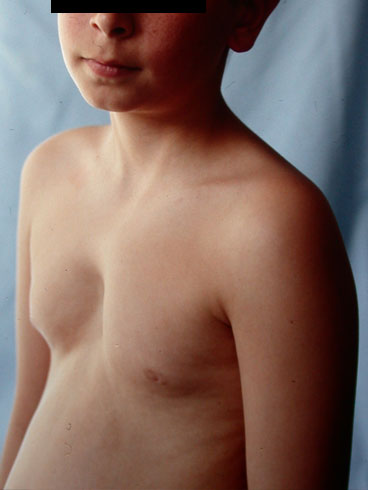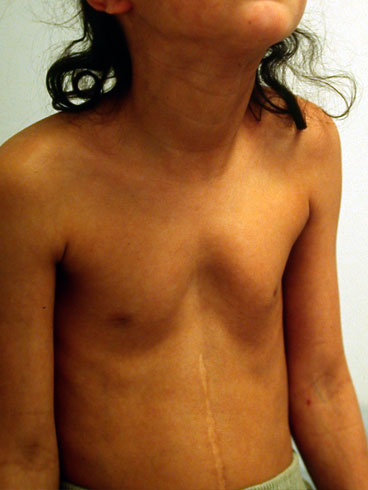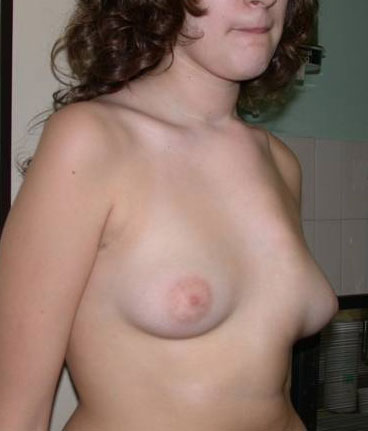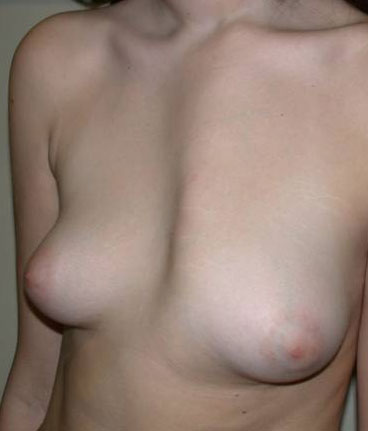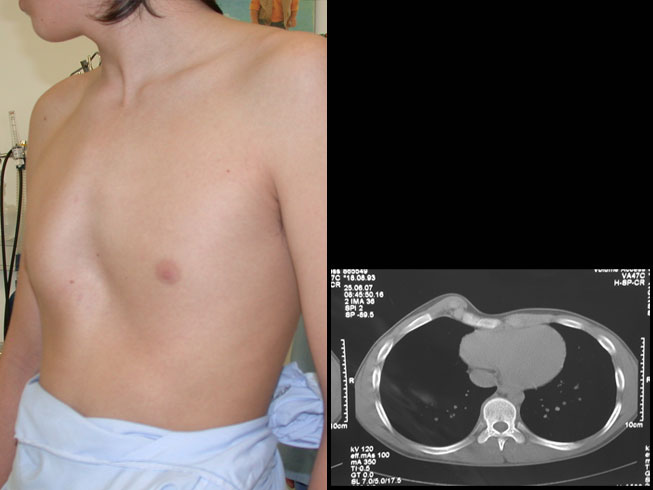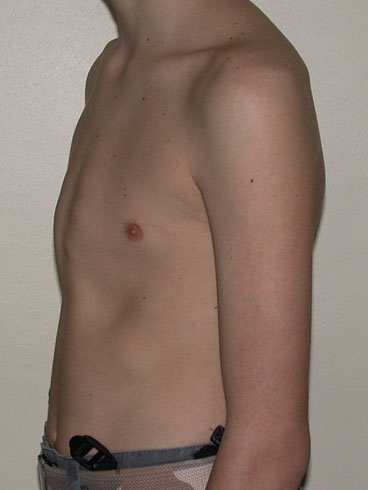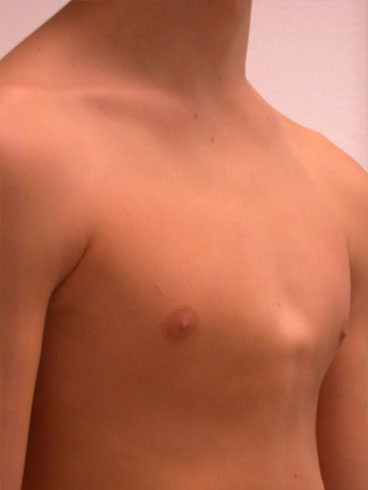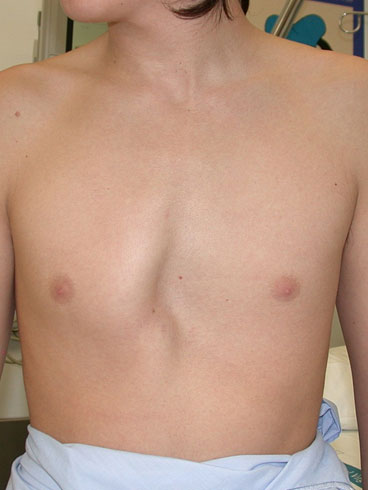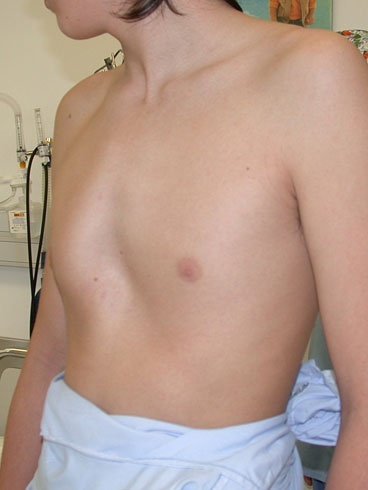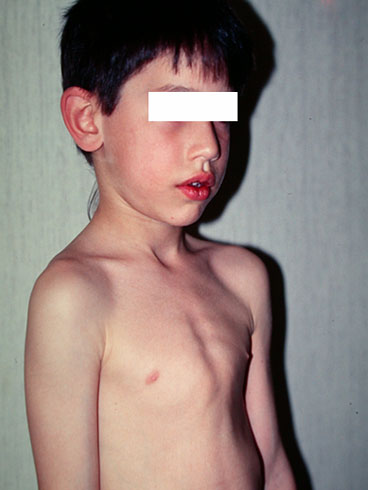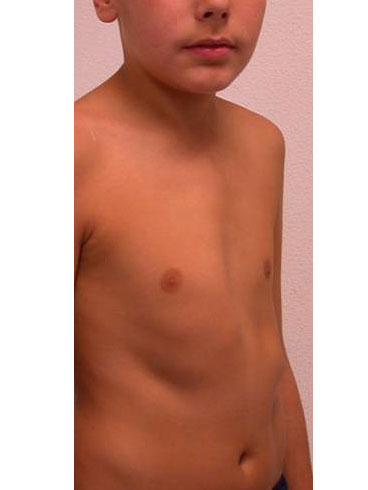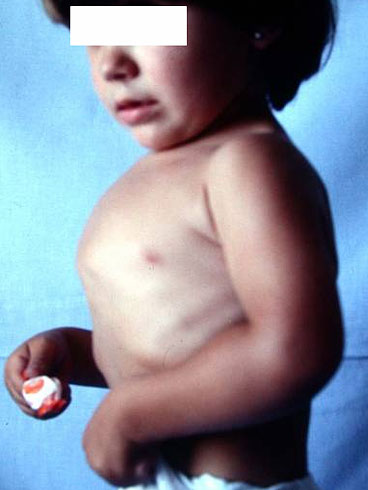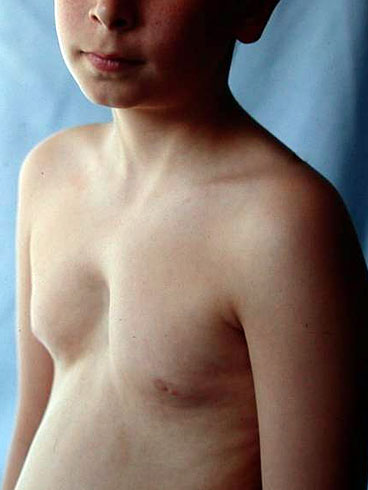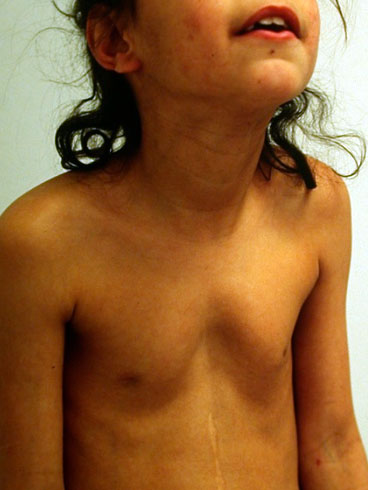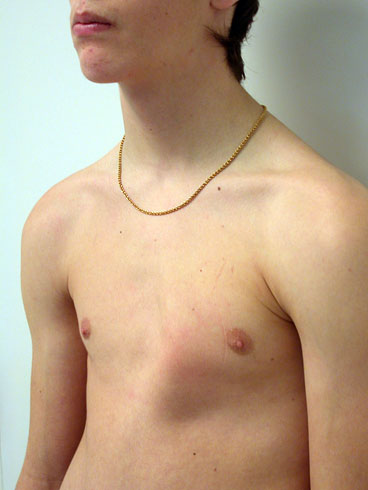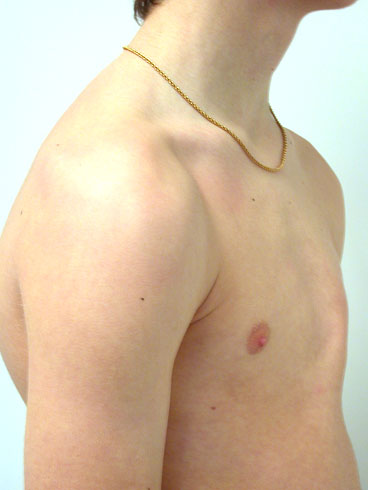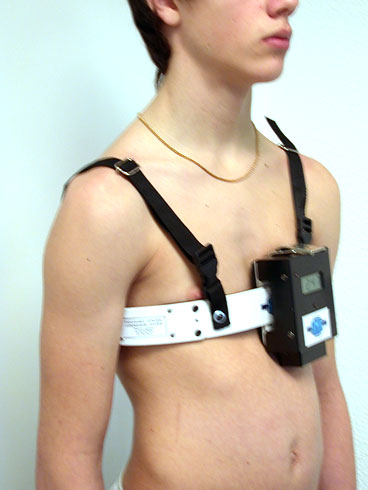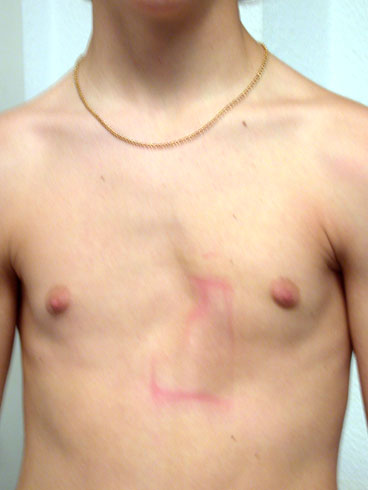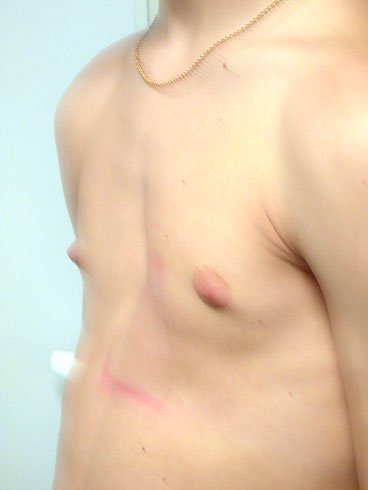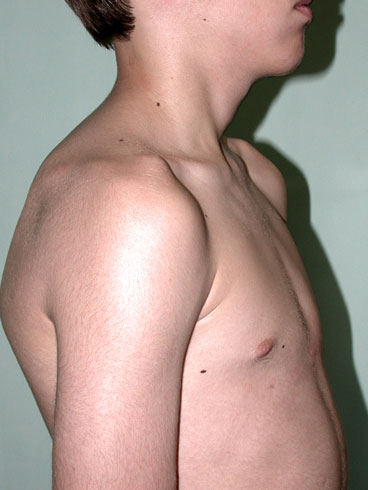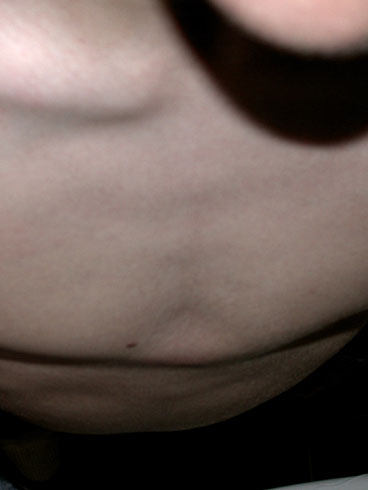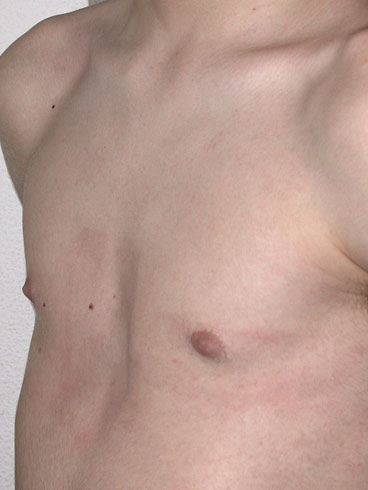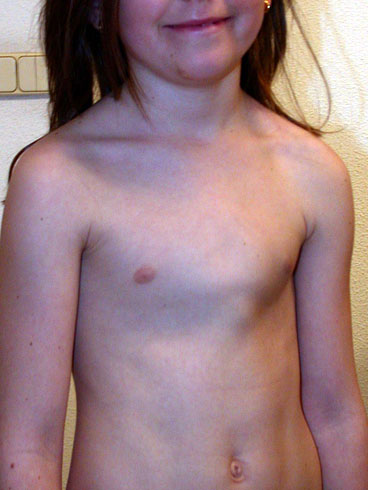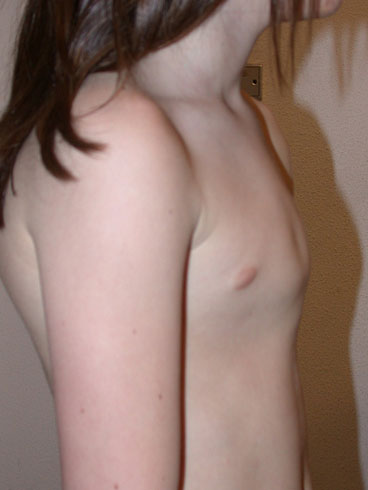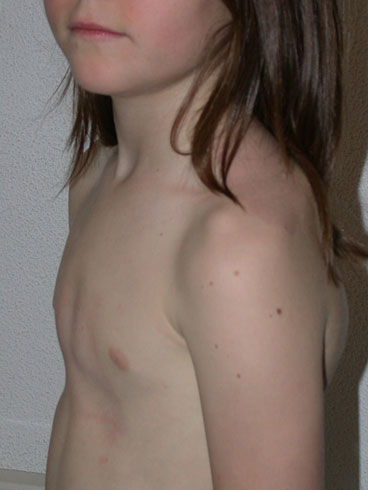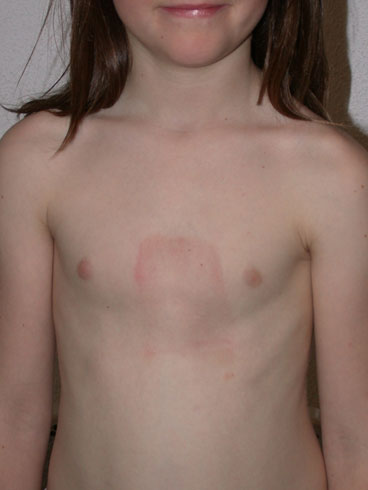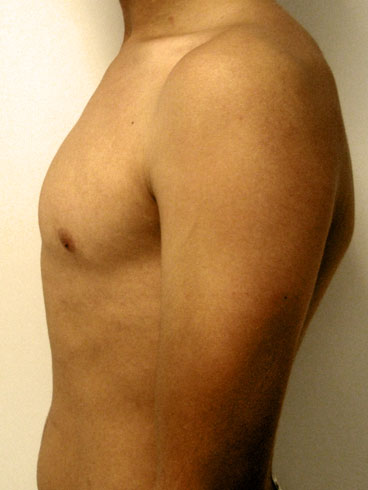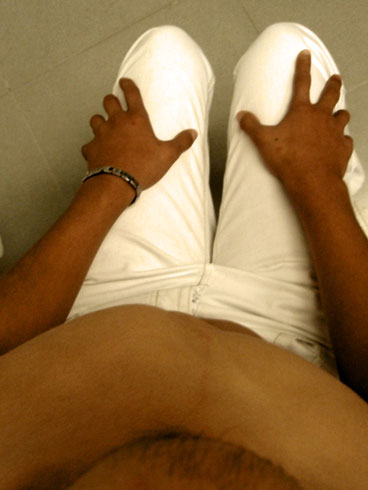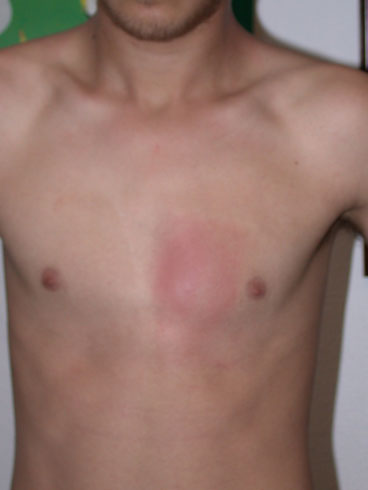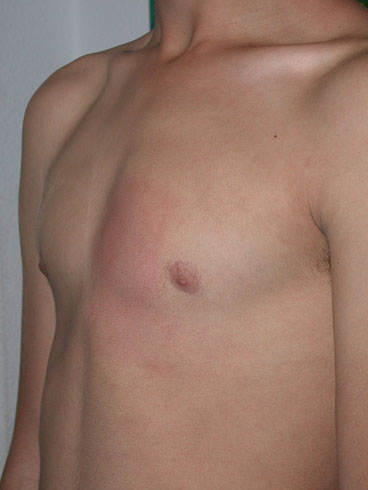Pectus Carinatum
It is a protusive deformity of the front wall of the thorax that includes the sternum and the adjacent ribs; it may be present different degrees and shapes. This deformity is five times less frequent than the pectus excavatum and it appears thrice more frequently in the masculine genre than in the feminine. There also exists a marked familiar influence up to a 30% of the people affected and, just like the pectus excavatum it may be associated up to a 15% to scoliosis and to the syndromes of Marfan, Morquio and Down in the most severe cases.
From an etiopathogenic point of view, it is considered agnoseologic entity similar to the pectus excavatum, even if it is unknown why in a determined moment of the deformity development, the malformation becomes protrusive. Frequently it is imperceptible during the first years of life and only becomes obvious at some point in the last stage of childhood and at the beginning of teenage years.
The extent and form of the deformity may be wide-ranging depending on the degree of sternum-costal damaging. The most common types are the condrogladiolar, in which there is a protrusive deformity of the low sternum and the parasternum cartilages; and the condromanubrial, which affects the high part of the sternum and the adjacent ribs. There exists a differentiated form, the Currarino-Silverman variety with a horseshoe-shape protrusion in the superior concavity that affects the 2-3 bilateral parasternum cartilages. Besides, we must underline, although less frequent, a sheer variety of asymmetric unilateral shapes and various combinations of deformity with whimsical shapes that affect the front wall of the thorax.
Types of Pectus carinatum
Symptoms
Usually not accompanied by symptoms and disorders resulting from this anomaly are mainly cosmetic and psychological. Could be very accentuated over the years, there may be a rigidity of the chest at a fixed position of inspiration resulting in emphysematous with repeat bronchopaties position. This would lead to a manifest physical activity restriction.
From the moment that the deformity is made obvious, should be monitored annually to ensure that it has a progressive trend growth, in which case we proceed to place a compression brace system. A XR of the chest, a chest CT and pulmonary function tests are recommended as additional studies to better define the malformation.
Sistema de compresión dinámico FMF
La elasticidad y maleabilidad de la pared torácica anterior, como lo demuestra la toracoplastia de Nuss en el pectus excavatum, son los principios en los que se basa el tratamiento ortopédico de la gran mayoría de los pectus carinatum.
Pacientes candidatos: Todas las deformidades protusivas, simétricas y asimétricas a excepción de las formas condromanubriales tipo Currarino-Silverman.
El sistema de compresión dinámico FMF es fácil de llevar, ligero, se adapta muy bien al paciente con buena tolerancia. Dependiendo de la PCI (presión de corrección inicial ), a los 2-3 meses se puede llegar a una total corrección del defecto, aunque habrá que seguir un periodo de mantenimiento de alrededor de un año. Es la opción terapéutica de elección, antes de cualquier tipo de cirugía correctora.
Candidate patients
Patients not candidates
Chondroglandiolar asymmetric pectus
Compresion system with pressure gauge wich is removed during use
2 months of treatment
Pectus carinatum chondroglandiolar mild. Patient 12 years
Continnuos pressures maintenance. Treatment time 3,5 months
Patient 7 years. Pectus carinatum chondroglandiolar moderate
Treatment time 2,5 months
Patient 13 years. Pectus carinatum chondroglandiolar asymmetric
Treatment time 3 months
